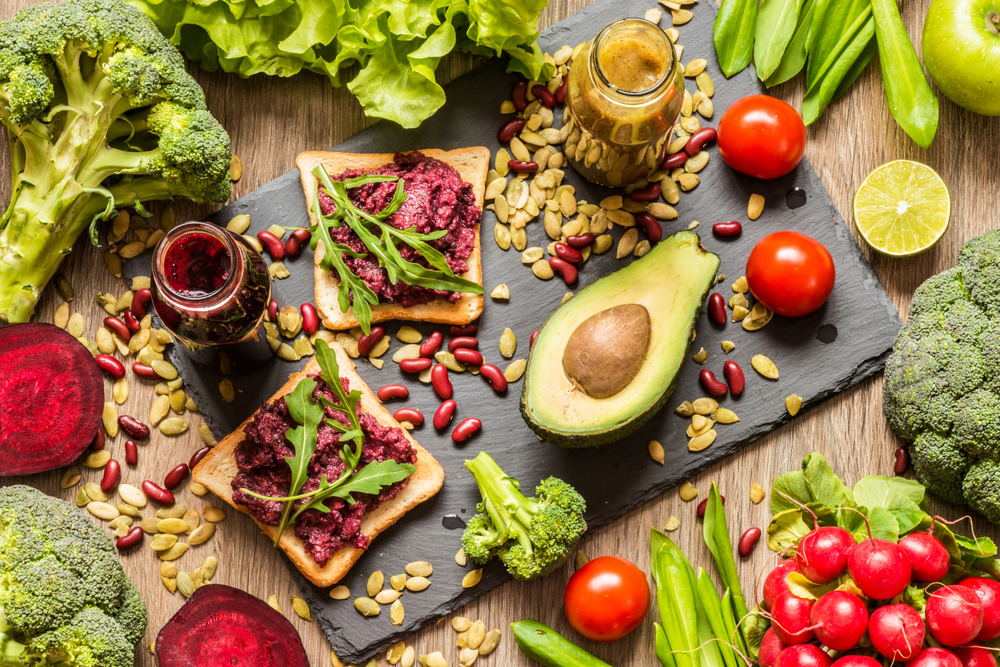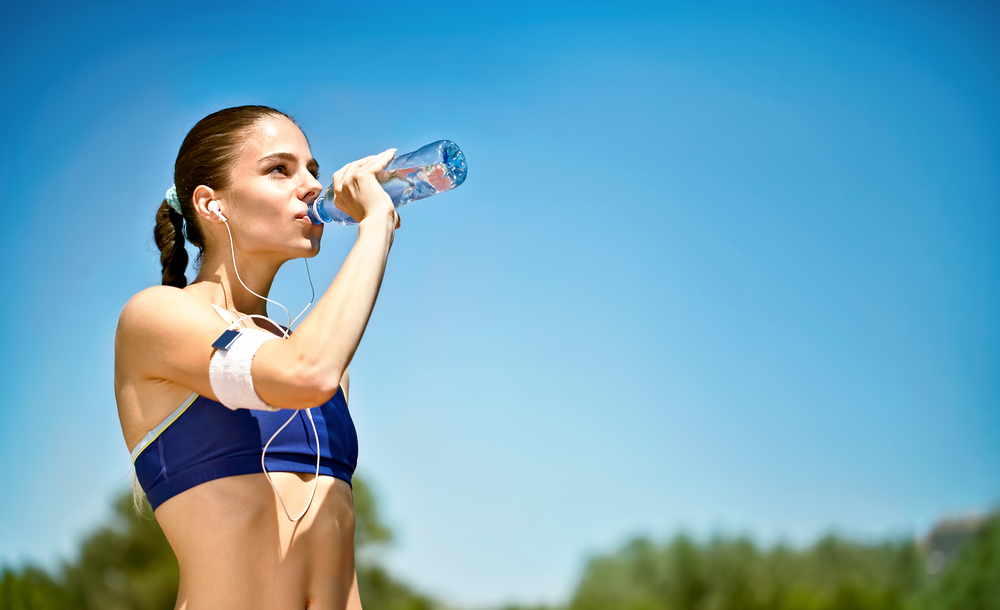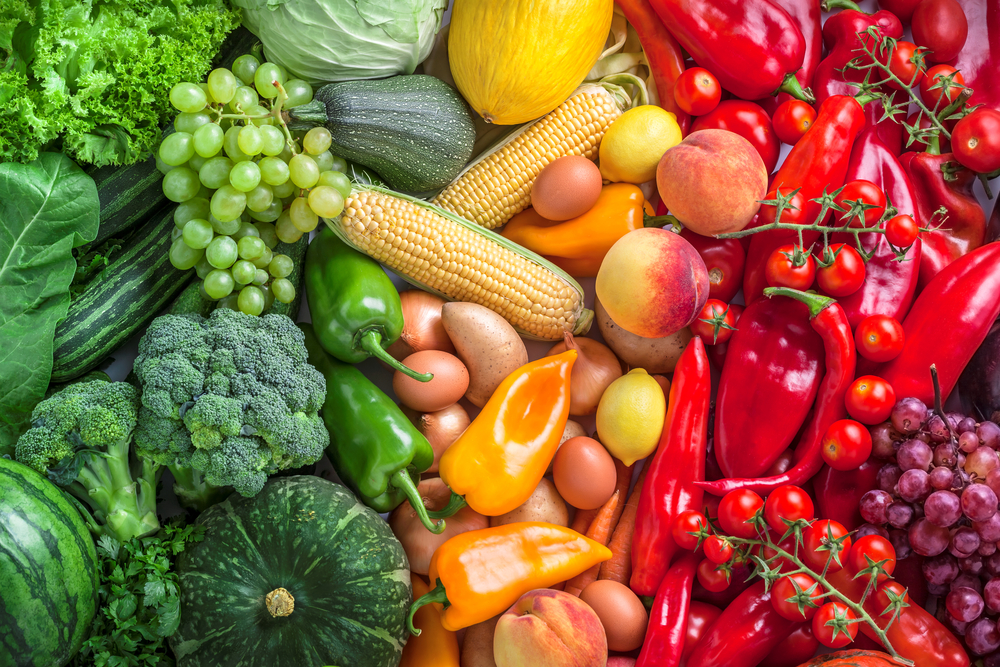Want to improve your diet but feeling overwhelmed by the advice that’s out there? From eating for better health, to fuelling your workouts, here are 30 healthy eating habits to try…
Exercising regularly and training with sufficient intensity is all well and good, but if your nutrition isn’t up to scratch, you won’t be getting the most bang for your buck from those workouts you’ve been slaving over.
You know about protein, the importance of fruit and veg, and why too many post-work drinks aren’t doing you any favours in the quest to shift excess belly fat, but there are some other crucial healthy eating habits you should be adopting.
You’re busy, we get it. And sometimes the food you eat day-to-day is the last thing on your mind. So, we’ve rounded up some simple, expert-approved and scientifically backed nutritional tips and healthy eating habits to nudge you a little further in the right direction…
Healthy eating habits for excess fat loss
1. Chew your food thoroughly
Chew, chew and chew again. Studies have found that chewing your food properly decreases your hunger as well as your food intake. Try 20 chews per bite.
2. Adjust your calorie intake depending on your activity levels
While calories in versus calories out is the fundamental equation for excess fat loss, it’s also important to consider what else you’re doing. If you’re training hard, you need to adjust accordingly. Plan your meals in line with your exercise and work schedules and take into account carbohydrate and energy requirements for each.
If you’re exercising less, you may need to decrease the amount of carbohydrate you’re consuming (if fat loss is the aim). But carbs are not the enemy, and if you start exercising more frequently again you should gradually increase your intake.
3. Fill up with ‘volume foods’
’Volume foods, such as spinach, lettuce, cucumber, gherkins and cabbage, can bulk out a meal for increased satiety without masses of calories,’ says Liam Holmes, nutritionist and Foodspring ambassador.
4. Pick your plates
When participants in one study ate their meals off white plates, rather than black or red, their food intake was reduced.
5. Spice things up
We’re not suggesting you blow your head off with Carolina reapers, but research in 2014 found that the capsaicin in chilli peppers could help with feelings of fullness, avoiding the need to reach for more food after mealtimes.
6. Cut calories sensibly
Dropping down to 500 cals a day won’t be something you can sustain for very long. ’Reduce calories by about 10 to 20 per cent,’ says specialist dietician Nichola Ludlam-Raine. ‘If you’d usually consume 2,500 calories a day, start with a reduction of 250.’
Cut calories too drastically and you’ll lack the energy to exercise. Not only that, your body may also start to lower its metabolic rate in order to conserve energy – making it harder to shift any unwanted flab.
7. Support your sleep with your diet
A decent night’s shut-eye plays a big part in weight loss, and the right foods can help you get it. In particular, tryptophan-rich foods are key. ‘Your brain needs tryptophan in order to make the sleep hormone melatonin,’ according to nutritionist and gut health specialist Marilia Chamon. ’Good sources include fish, eggs, rice, oats, chickpeas, soybeans, tofu, chia, sesame seeds and pumpkin seeds.’

Go meat-free at least once a week to boost your health and do your bit for the environment.
Healthy eating habits for good health
8. Manage your meat intake
‘Go meat-free at least once a week,’ advises Rob Hobson, head of nutrition at Healthspan Elite. This is not only good for your health, but has you doing your bit for the environment. ‘Swap chicken for Quorn or marinated tofu in a stir-fry,’ he adds, ‘and swap mince in a bolognese sauce or chilli for Quorn mince or canned beans.’
9. Hit the magic number
‘When it comes to hitting your 5-A-Day fruit and veg quota, one portion equals 80g,’ says Ludlam-Raine. ‘This should come from different coloured fruit and vegetables, as each different food has a unique set of nutrients.’
10. Fill up with fibre
Only nine per cent of adults meet the recommended 30g a day. ‘Fibre helps reduce the risk of heart disease, high cholesterol, type 2 diabetes and colorectal cancer, while also helping you to maintain body weight,’ says Hobson. ‘Eat more vegetables, switch to brown, wholegrain carbs and eat more legumes,’ he adds.
11. Eat two portions of oily fish a week
To keep your ticker healthy, tuck into at least two portions of oily fish a week. Think mackerel, sardines and salmon, which studies – published in the journal Frontiers of Nutrition – have shown could also prevent or slow down the development of brain disorders, such as Parkinson’s. All thanks to oily fish’s anti-inflammatory nutritional make-up.
12. Eat more veg
Yeah, yeah, yeah, the usual. But this is the simplest way to improve your overall health and reduce your risk of disease. ‘Always think, add one more,’ says Hobson. ‘Keep “easy” veg, such as frozen peas and soya beans, to hand, which can be added to any hot meal. ‘Spinach is the same, and green beans or tenderstem broccoli are also hassle-free and quick to prepare.’
13. Balance your diet
Eating a balanced diet will ensure you get the nutrients your body needs to support your immune system, but it’s also advisable to supplement with vitamin D during the winter months. ‘Probiotics may be useful for immune health during periods of intense training,’ Hobson adds. ‘And if you’re travelling overseas to compete, try starting a course or probiotics a couple of weeks beforehand.’
14. Be wary of sports drinks
‘They’re basically full of sugar,’ says Hobson, ‘and only of benefit to those training aerobically or competing in races lasting more than an hour. When you’re training in the gym, you need nothing more than water.’

Sports drinks are full of sugar – don’t rely on them during gym workouts.
Healthy eating habits for building strength
15. Look for leucine
‘This amino acid stimulates muscle protein synthesis, which helps to initiate regenerating and building muscle mass,’ says Ludlam-Reine. Leucine is mostly found in animal proteins: eggs, milk, whey powder, meat and fish. Plant-based? ‘Opt for complete sources of protein, such as soya, vegan protein powders (which contain all the essential amino acids) and mycoprotein.’
16. Recover right
Post-exercise nutrition is just as important as fuelling your body pre-exercise. Protein is vital for effective recovery, and the anabolic effect of consuming protein post-exercise is long-lasting. Think about eating meat, fish or even plant-based foods to aid with muscle recovery and development. Oily fish, such as wild salmon, is high in omega-3 and can also help support with inflammation management.
17. Drink beets
A study published in the journal Nutrients found that when 70ml of beetroot juice was taken two hours before training, the total rep count of back squats and bench press increased.
18. Shake it off
‘A shake containing 25-30g of protein is ideal after a weights session. Any more won’t be used by the body,’ says Hobson.
19. Sleep on it
A study published in Frontiers in Nutrition found that 40g of casein, taken after an evening resistance-based workout and 30 minutes before sleep, could help with muscle recovery and increase protein synthesis.
20. Power up plants
Vegan or trying to cut down on animal products? ‘If your plant-based shake contains less than 20g of protein,’ says Hobson, ‘pair it with a small amount of carbs, as that will help with the protein uptake.’
21. Eat vegetables to reduce inflammation
‘Polyphenols – the colourful chemicals found in plants – work to reduce inflammation, as well as improving the ability of the gut microbiome to produce helpful postbiotics, which play a role in better overall body composition,’ says Dr Federica Amati, nutritionist and chief nutrition scientist for Indi Supplements. Berries, beetroot, aubergine, red peppers and broccoli play just as big a role in muscle composition and strength as protein does.

Polyphenols – the colourful chemicals found in plants – work to reduce inflammation.
Healthy eating habits for endurance
22. Take glucosamine for joint health
Long workouts can wreak havoc with joints. Glucosamine, available in supplements, can help with stiff joints. It’s also found in the shells of shrimp, lobster and crab.
23. Eat nitrate-rich foods
Proven to improve performance in endurance sports, Holmes recommends nitrate-rich foods, such as beetroot, rhubarb, carrots and green vegetables.
24. Up your B vitamins
A busy training schedule, alongside a hectic work life and stress, can deplete the body of nutrients. They include B vitamins, which support a healthy nervous system and help to break down food into energy for the body. Seafood, quality meat, leafy green veg and fortified cereals are all good sources of B vits.
25. Try a carb-based mid-workout drink
Make your mid-workout drink carb-based and simple. ‘Perfect for those longer sessions, carb powders, fruit juice or coconut water are all good options,’ says Holmes.
26. Manage your minerals
Sweating is your body’s defence system against overheating. Unfortunately, though, when you sweat, you also lose some important minerals known as electrolytes, including sodium and potassium. Electrolytes support a number of bodily functions, including energy production and fluid balance.
‘It is very important to replace the electrolytes lost when you sweat,’ explains sports nutritionist Will Girling. ‘At best, you will see an unwelcome decline in your performance. At worst, you can get hyponatremia (low blood sodium), which can be deadly. So, during extended exercise, take on an electrolyte source once an hour. Around 400mg of sodium – or one electrolyte tablet – should cover most people,’ he adds.
27. Increase your intake of iron-rich foods
‘Iron is an essential nutrient for endurance performance that is often overlooked,’ says Holmes. ‘Good sources include high-quality red meat, beans, seeds, dried fruit and leafy green vegetables.’
28. Boost energy with a high-GI source of carbohydrates
‘If you’re training for any longer than 60 minutes, you may benefit from a high-GI source of carbohydrates for an immediate top-up of energy,’ says Ludlam-Reine. Try a handful of Jelly Babies or some Haribo.
29. Measure your carb intake
‘Training for one hour a day means eating 5-7g of carbs per kg of bodyweight,’ says Hobson. ‘Training one-to-three hours a day requires 6-10g per kg of bodyweight. But if you’re not used to eating high amounts of carbs, build up slowly to avoid any gut discomfort.’ No scales? Simply aim to fill a third of your plate with starchy carbohydrates.
30. Avoid pre-race fibre
It’s wise to carb-load 48 hours before any event lasting more than 90 minutes. ‘Aim for 10-12g per kg of bodyweight,’ says Hobson, ‘which will mean reducing your protein intake. Choose low-fibre carbohydrates to avoid any bloating or gut discomfort. Make sure you test this out before a long training session to establish your tolerance to carbohydrates, and on race day aim for 1-4g carbs per kg of bodyweight, four hours beforehand.’
Words: Lucy Gornall | Photography: Shutterstock








